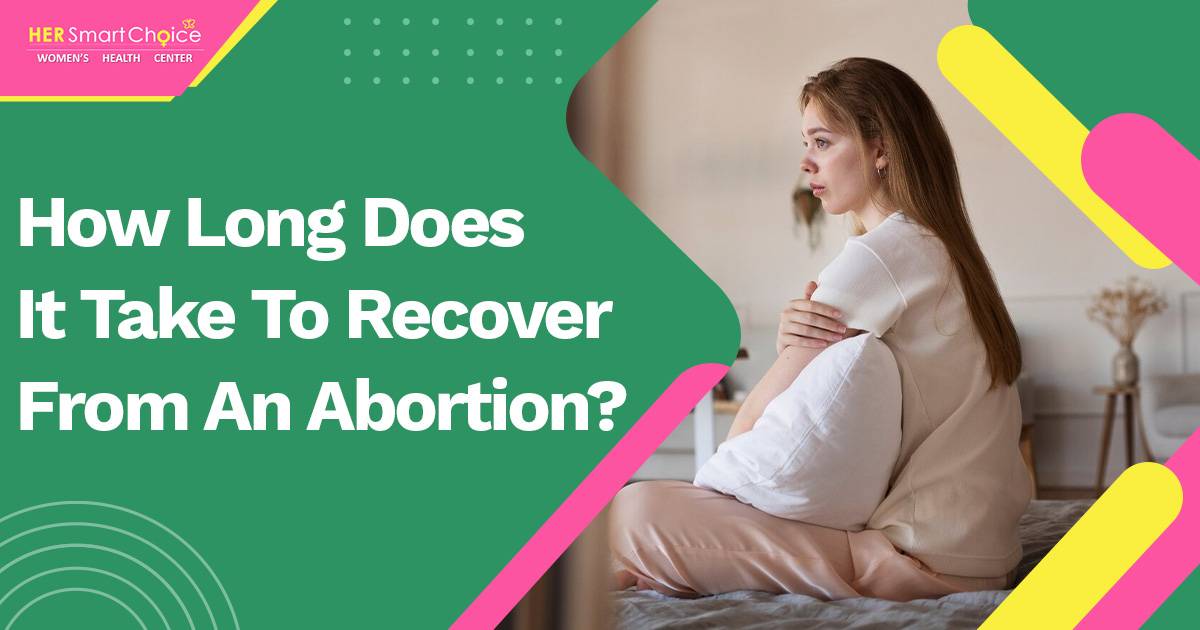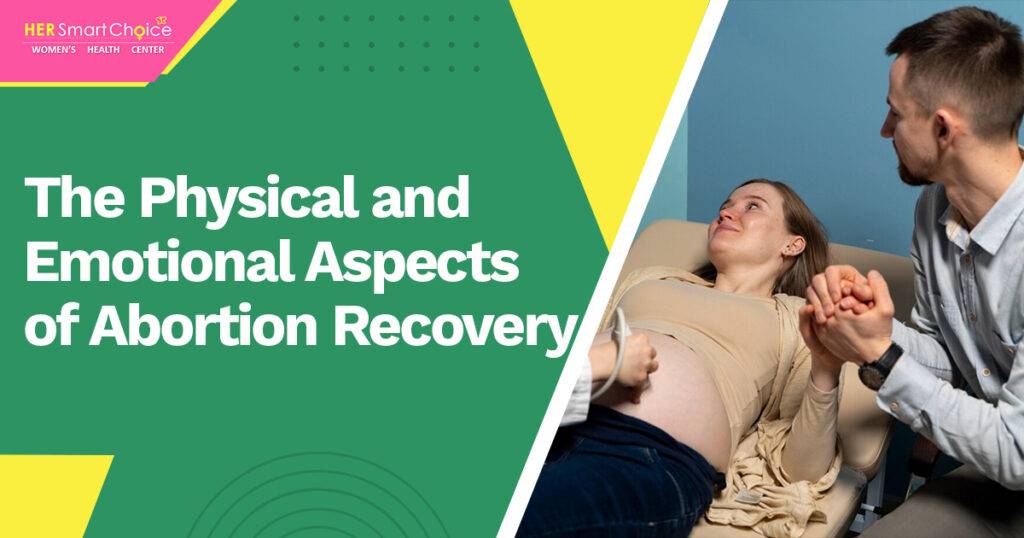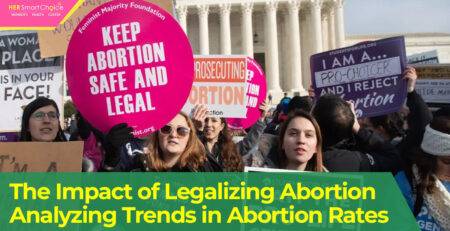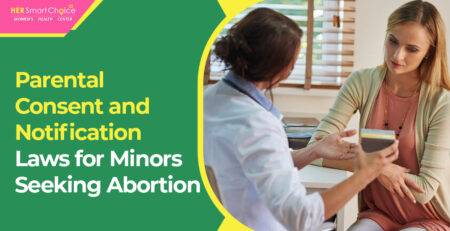How Long Does It Take To Recover From An Abortion?

With the word ‘Abortion’, there is a storm of questions originates in women’s minds related to its complication and recovery. There are various reasons that suggest women choose abortion as their primary choice to terminate pregnancy. Besides abortion, another important concern is the recovery process after the procedure. How long does it take to recover from an abortion? It’s a question many women have, so, let’s explore the factors that can influence abortion recovery time. We’ll also discuss essential tips, including what to eat after an abortion for a faster and smoother recovery.
Follow Us!
The Physical and Emotional Aspects of Abortion Recovery

Abortion recovery involves both physical and emotional healing. The physical aspect relates to your body’s healing after the procedure, while the emotional aspect deals with the feelings and emotions that may arise during this time. It’s crucial to recognize that every woman’s experience is unique, and the recovery timeline of all individuals can vary.
Factors Influencing Abortion Recovery Time
Several factors can influence how long it takes to recover from an abortion. Here are a few of them that can help you understand it in a better way:
Type of Abortion
Medication Abortion: This method typically has a shorter physical recovery period, often a few days to a week.
In-Clinic Abortion: Physical recovery may take a bit longer, with some women feeling back to normal within a few weeks.
Gestational Age: The stage of pregnancy at which the abortion is performed can impact recovery. Generally, earlier abortions tend to have shorter recovery times.
Individual Health: Your overall health, both physical and emotional, plays a significant role in recovery. Women who are in good health may recover more quickly.
Complications: In some cases, complications may arise that require additional medical attention. This can extend the recovery time.
Physical Recovery
The physical recovery process after an abortion can vary, but here’s a general timeline:
First Few Days: You may experience bleeding and cramping, similar to a heavy menstrual period.
First Two Weeks: Most women find their symptoms, including bleeding and cramping, gradually improving during this time.
First Month: By the end of the first month, you should be mostly recovered, with minimal to no symptoms.
Emotional Recovery
The emotional recovery process can be just as important as the physical aspect. It’s essential to be patient with yourself and allow your emotions to surface and be processed. If needed, consider seeking emotional support from a therapist, counselor, or a support group.
Tips for a Faster and Smoother Abortion Recovery
Here are some tips to help you recover more quickly and comfortably after an abortion:
Rest: Give your body time to heal. It is good to avoid activities that are harsh on your body and get plenty of rest.
Hydrate: It is good to drink plenty of water to keep your body hydrated.
Nutrition: Eat a balanced diet to support your body’s healing. Include foods rich in iron, folic acid, and vitamin D.
Pain Management: If you experience discomfort, follow your healthcare provider’s guidance on over-the-counter pain relief.
Follow-Up Appointments: Attend any scheduled follow-up appointments with your healthcare provider to ensure your recovery is on track.
Emotional Support: Don’t hesitate to seek emotional support if you’re feeling overwhelmed. Talking to a counselor or joining a support group can be incredibly beneficial.
What You Can Eat After an Abortion for Fast Recovery

what to eat after abortion for fast recovery Nutrition plays a vital role in your recovery after an abortion. Eating the right foods can help your body heal more efficiently. Here’s what to include in your diet:
Iron-rich foods: Abortion can lead to temporary blood loss, so consuming iron-rich foods like lean meats, beans, and leafy greens can help replenish your iron levels.
Folic Acid: Foods like lentils, fortified cereals, and leafy greens are excellent sources of folic acid, which is essential for tissue repair.
Vitamin D: Vitamin D aids in bone health, and you can find it in fatty fish, fortified dairy products, and sunlight exposure.
Protein: Protein supports tissue repair and is found in foods like poultry, fish, tofu, and pulses.
Fruits and Vegetables: A balanced diet with a variety of fruits and vegetables provides essential vitamins and minerals to aid in recovery.
Hydration: Don’t forget to drink plenty of water to stay hydrated, especially if you experience any bleeding.
Final Thoughts
Abortion recovery is a unique journey for every woman. How long it takes to recover can vary, but with proper care, both physically and emotionally, you can support a faster and smoother healing process.
Remember that it’s okay to seek help, whether it’s from healthcare providers, therapists, or support networks. Your well-being is a top priority, and by taking the right steps, you can ensure a successful and healthy recovery after an abortion. For more detailed information, you may visit the Women’s Health Clinic in Los Angeles.
Follow Us!
FAQ
Engaging in sexual activity after an abortion is a common concern for many women. It is generally recommended to wait at least two weeks to allow your body to heal properly, but always consult with your healthcare provider for personalized advice.
Returning to work after an abortion can vary based on individual recovery. Most women can typically resume work within a few days, but it’s essential to listen to your body and consult with your healthcare provider for personalized guidance.
Experiencing mood swings after an abortion is common and can occur due to hormonal changes and emotional responses. It’s important to acknowledge these feelings and seek support if needed, as they are a normal part of the recovery process.
The recovery time from an abortion physically varies by individual but generally takes about a few days to a couple of weeks. Factors such as the type of procedure and personal health can influence this timeline.
Bleeding after an abortion typically lasts between a few days to two weeks. It’s normal for the intensity to vary, with lighter spotting occurring as recovery progresses. If you have concerns about your bleeding, please reach out to us at Her Smart Choice for guidance.
Infections can occur after an abortion, though they are relatively rare. It’s crucial to follow post-procedure care instructions and monitor for any unusual symptoms. If you have concerns, please reach out to us at Her Smart Choice for guidance and support.
The do’s and don’ts of post-abortion bleeding include resting adequately and monitoring your symptoms, while avoiding heavy lifting, vigorous exercise, or using tampons. Always consult your healthcare provider if you have concerns or experience excessive bleeding.
Experiencing heavy bleeding after an abortion is possible. It’s important to monitor your bleeding and contact a healthcare provider if it becomes excessive or is accompanied by severe pain, as this may indicate a need for medical attention.
The emotional healing process after an abortion varies for each individual, typically taking anywhere from a few days to several weeks. It’s important to allow yourself time and seek support if needed.
The timeline for resuming exercise after an abortion typically ranges from a few days to a couple of weeks, depending on individual recovery. It’s essential to listen to your body and consult with your healthcare provider for personalized guidance.










